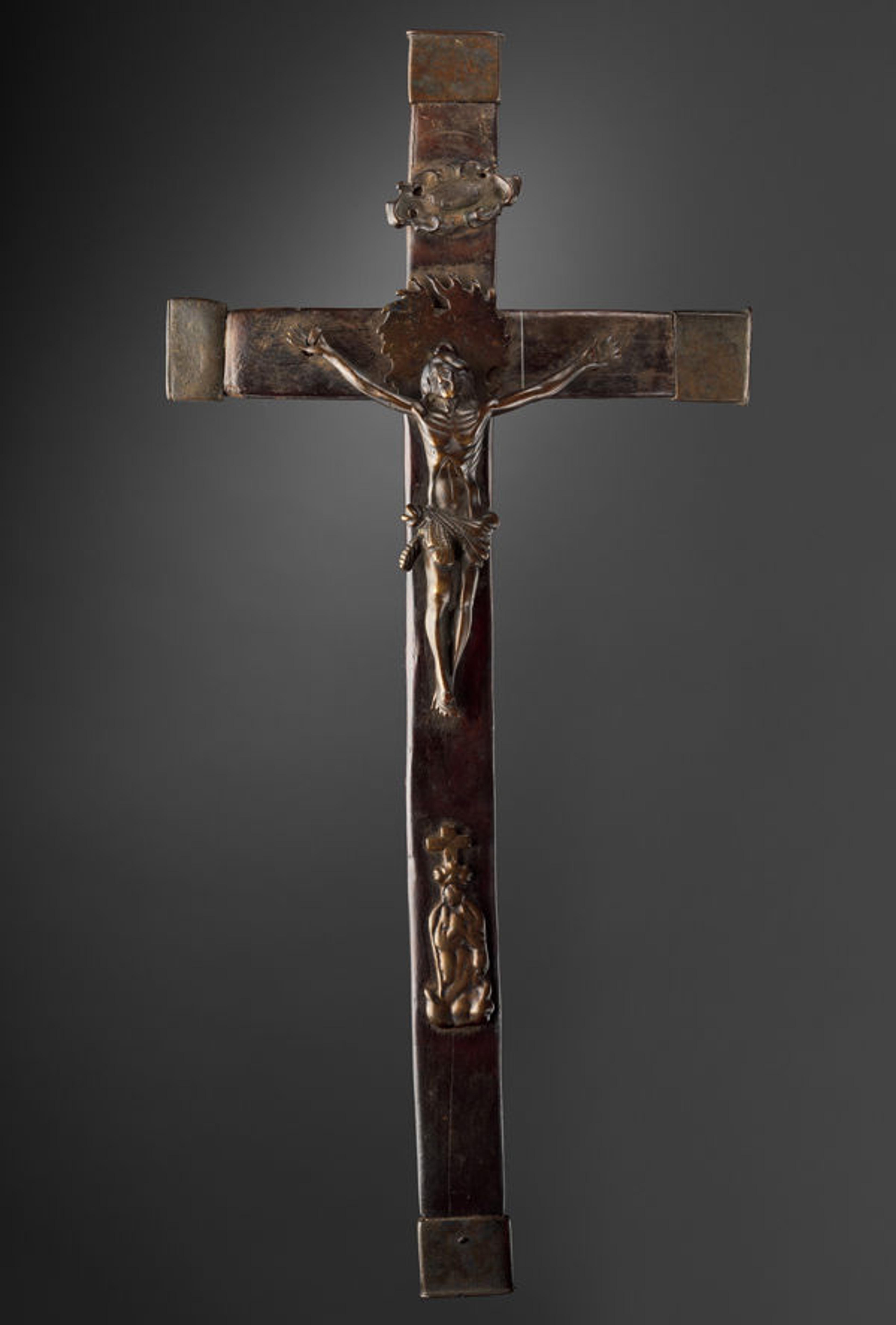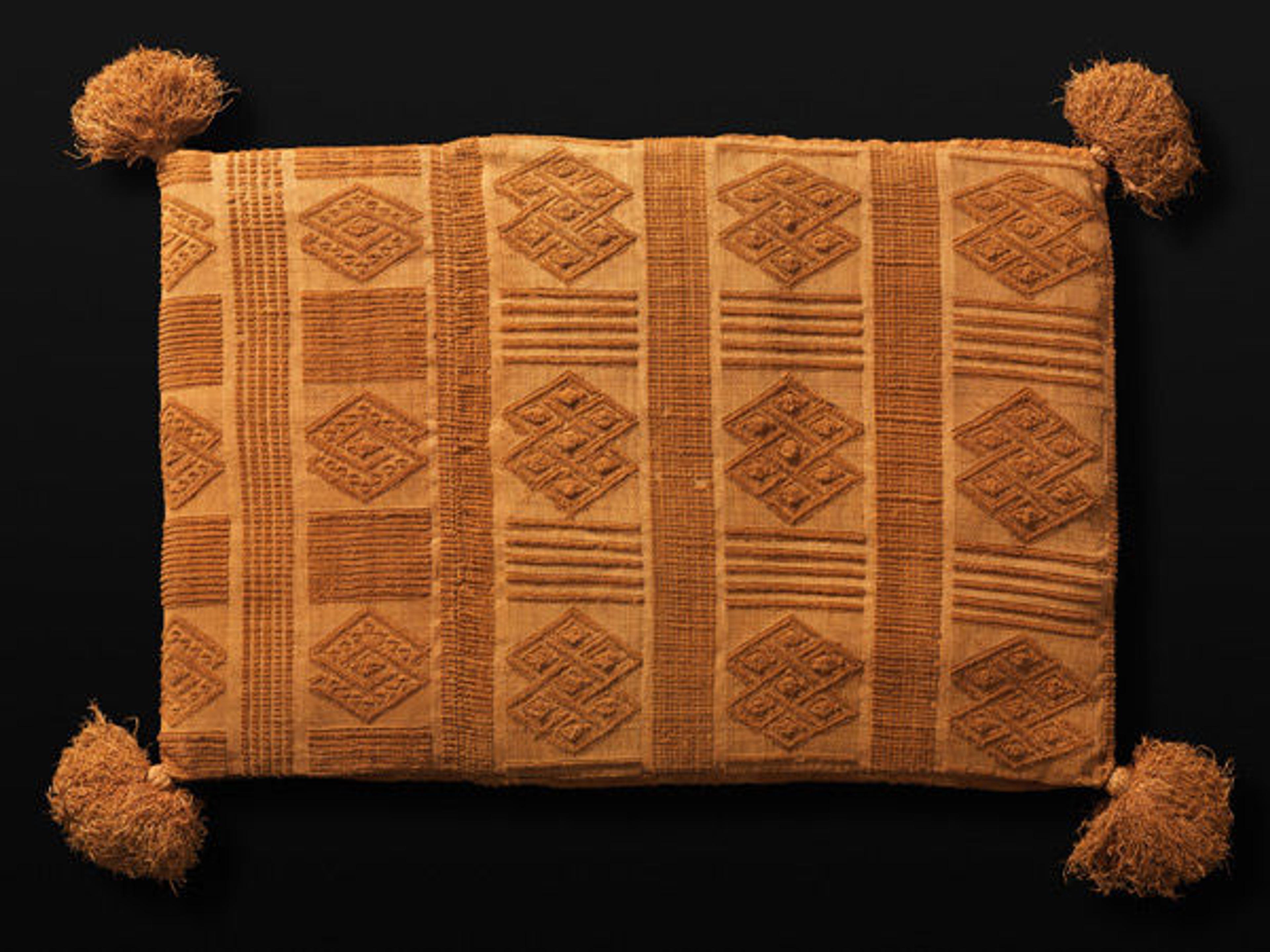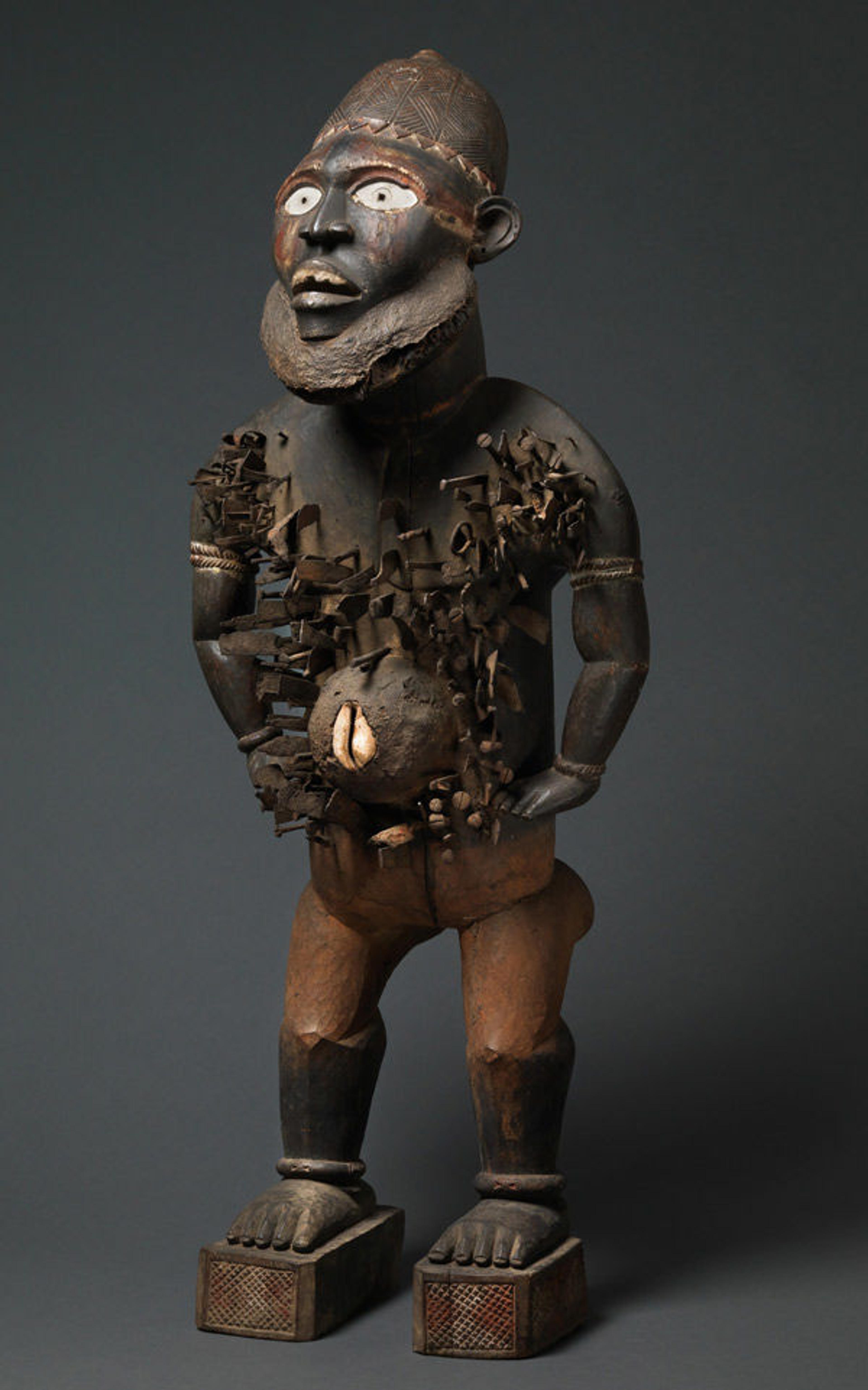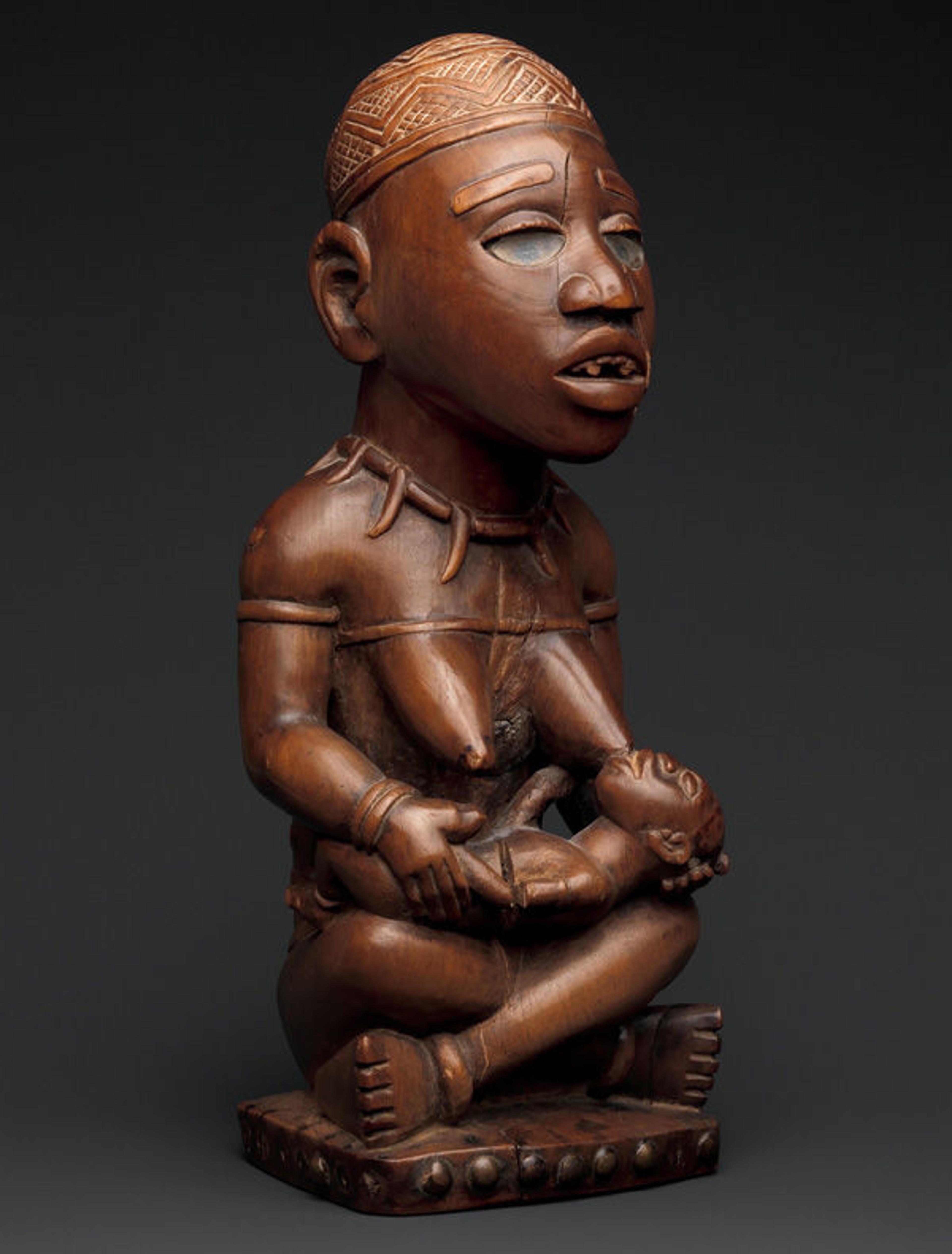Great Traditions—Kongo: Power and Majesty with Alisa LaGamma
Kongo: Power and Majesty by Alisa LaGamma features 261 color illustrations and is available at The Met Storeand MetPublications.
«Leaders of the Kingdom of Kongo, a region that today spans the Republic of the Congo, the Democratic Republic of the Congo, and Angola forged connections with their European counterparts as early as the fifteenth century. While that relationship with the West began as one of equals, soon after the discovery of the Americas, this region of Central Africa became the epicenter of the Atlantic slave trade. This, followed by European colonization in the nineteenth century and the exploitation of the area's immense natural resources, created great instability and subjected Kongo peoples to devastating hardships. The over 170 works created by Kongo artists and presented in this new publication express the majesty of this society in the face of unparalleled challenges and enormous upheaval. Kongo: Power and Majesty accompanies the eponymous exhibition, on view through January 3, 2016.»
I spoke with Alisa LaGamma, author and curator of Kongo: Power and Majesty, about the evolution of the relationships between regional leaders and the West, the imagery used by Kongo artists, and the artistic landmark in the Met's collection that inspired this publication and exhibition.
Rachel High: In the introductory essay to the catalogue, you discuss the fact that while works by Kongo artists often responded to developments triggered by the arrival of Europeans in the region, they also frequently incorporated new images and designs adapted from European sources. Could you briefly discuss this complex relationship?
Alisa LaGamma: The catalogue and exhibition explain that this region was never cut off from the outside world. The relationship with Europe goes back five hundred years, and art from Kongo is part of a dynamic tradition that was always innovating and constantly responding to stimuli from the outside. One of the fascinating things that happens when you bring together the lesser-known early objects with the more familiar nineteenth-century material is that you realize that the surviving works reflect very important changes in the relationship between Africa and the West.
When Central African artifacts first arrived in Europe, they were decorative arts in carved ivory and fiber textiles, which easily assimilated into the aesthetic of European courts and entered princely collections. In that period of history, these societies really saw each other as equals or peers. From the sixteenth to the eighteenth century, Kongo artists also created religious artifacts, but none of those were collected by Europeans.

This early work with later additions shows the conversation between European and Kongo iconography. Crucifix, 16th–17th century with later additions. Kongo peoples; Kongo Kingdom, Democratic Republic of the Congo; Angola; Republic of the Congo. Solid cast brass (Christ), solid cast copper alloy (halo); hollow cast bronze (three end pieces), brass sheet (one end piece), solid cast copper alloy (Mary); forged copper and brass (nails), wood; H. 18 in. (45.7 cm), W. 8 1/2 in. (21.6 cm), D. 3/4 in. (1.8 cm). The Metropolitan Museum of Art, New York, Gift of Ernst Anspach, 1999 (1999.295.8)
The absence of religious artifacts from Kongo in pre-nineteenth-century Europe underscores that at this time, before colonialism, Europeans respected the power of such objects, and it wasn't acceptable to collect them as exotica. That changed in the nineteenth century, and religious artifacts were sometimes forcibly removed because Europeans recognized their power and influence over the lives of the local people they were seeking to subjugate. In trying to create a continuum of Kongo art, we bring together some of the great artistic achievements produced over a four-hundred-year period, but the works drawn from different generations reflect artists' preoccupations with different kinds of commissions. In a way, the distribution of artifacts that have been preserved reveals what Europeans were collecting at different times and their changing attitudes rather than what actually existed.

Beautiful textiles like this one have been preserved in early European collections. Luxury Cloth: Cushion Cover, 17th–18th century, inventoried 1876. Kongo peoples; Kongo Kingdom, Democratic Republic of the Congo, Republic of the Congo, or Angola. Raffia; 20 1/8 x 31 1/4 in. (51 x 79.4 cm). MIBACT – Polo Museale del Lazio, Museo Preistorico Etnografico Luigi Pigorini, Rome (5471)
Rachel High: Perhaps the most recognized art form identified with Kongo culture are minkisi or power figures. However, the profound significance of these figures in Kongo society is not as well known. How were these works used or presented at the time?
Alisa LaGamma: Kongo religious specialists developed specialized responses to particular problems in the form of spiritual instruments. There is a tremendous variety in the spiritual instruments that they used in their professional practice, and we know that these minkisi existed before European contact through references to Kongo religion in the correspondence of early Europeans visitors.
There wasn't a generic type of object known as a power figure. A Kongo priest would assemble particular recipes of medicines that were believed to draw a force. These were housed within a receptacle of some kind. Sometimes the priest would commission a sculptural form to play that role, and in those cases there was a dialogue between a sculptor and a priest. Both of them contributed to the efficacy of such instruments of power.
Many of the objects in the book had been emptied of their sacred ingredients before they were traded to Europeans. This is evidence that local owners very deliberately disempowered the works before they were released into the world.

Power Figure (Nkisi N'Kondi: Mangaaka), 19th century, inventoried 1898. Kongo peoples; Yombe group, Chiloango River region, Cabinda, Angola. Wood, iron, resin, ceramic, plant fiber, textile, cowrie shell, animal hide and hair, pigment; H. 46 1/2 in. (118 cm), W. 18 1/8 in. (46 cm), D. 13 3/4 in. (35 cm). Manchester Museum, University of Manchester (0.9321/1)
Rachel High: The figure of a woman and child was a common and important motif for Kongo artists. In the book you question an early theory that relates these works to Western depictions of the Madonna and Child. What do you hope the book will elucidate about their origin and function?
Alisa LaGamma: The first art historian who wrote about these objects, Douglas Fraser, proposed that because there had been a European presence in this region, these objects must reflect the influence of Madonna and Child imagery. That assumption was typical of attitudes by European and American art historians of the time, and I problematize it in the essay. We know that the image of mother and child is a universal one in the history of art, not just in Europe or Africa, but in just about every major world tradition.
In this region, this motif takes a special urgency in the lives of the people. From the sixteenth century on, communities shrank due to the ravages of the Atlantic slave trade and colonialism: adult men were forcibly removed from their homes, and women were burdened with enormous responsibilities for the well-being of their communities. Depictions of mother and child figures by Kongo artists aren't just literal representations of mother and child—they are aspirational. They are about a collective social need to revitalize those communities.

This sculpture is an example of a mother and child figure as portrayed by a Kongo master. Master of the Boma-Vonde Region. Power Figure: Seated Female Nursing Child (Nkisi), 19th–early 20th century. Kongo peoples; Yombe group, Democratic Republic of the Congo; Republic of the Congo; Cabinda, Angola. Wood, metal, kaolin, glass, resin, pigment; H. 11 1/8 in. (28.3 cm), W. 4 1/4 in. (10.8 cm), D. 4 1/4 in. (10.8 cm). Steven Kossak, The Kronos Collections, New York
In Kongo art there are two distinct ways that power is manifested: there is the commanding aggression of male leaders, and the nurturing leadership of women. Healthy society is an equilibrium of both of those complementing one another.
Rachel High: What was the inspiration for this book and exhibition?
Alisa LaGamma: Seven years ago, I had the opportunity to propose a very important acquisition for the Metropolitan Museum's collection: the great power figure that stands at the entrance to the Michael C. Rockefeller Wing. Studying that work very carefully was really the catalyst behind this project.

This power figure in the Met's collection inspired the book and exhibition. Power Figure (Nkisi N'Kondi: Mangaaka), 19th century. Kongo peoples; Yombe group, Chiloango River region, Democratic Republic of the Congo, Republic of the Congo, or Cabinda, Angola. Wood, iron, resin, ceramic, plant fiber, textile, pigment; H. 46 1/2 in. (118 cm), W. 19 1/2 in. (49.5 cm), D. 15 1/2 in. (39.4 cm). The Metropolitan Museum of Art, New York, Purchase, Lila Acheson Wallace, Drs. Daniel and Marian Malcolm, Laura G. and James J. Ross, Jeffrey B. Soref, The Robert T. Wall Family, Dr. and Mrs. Sidney G. Clyman, and Steven Kossak Gifts, 2008 (2008.30)
All of the information that careful study of this work revealed made it clear that it merited being positioned in relation to comparable examples preserved in other American and European institutions. The grand finale of this book is the chapter that discusses this figure's significance and its relationship to a very small corpus of only twenty other surviving examples. This book presents that group for the first time as a coherent body. It's been very meaningful for me personally to have studied the Met's acquisition up close, and now to be able to present it alongside some of the other great masterpieces in the field of Central African art.
Rachel High
Rachel joined the Publications and Editorial Department in 2014 where she has previously held the roles of Publishing and Marketing Assistant and Assistant for Administration. She manages the MetPublications website, the Museum's text licensing program in all languages, and the @MetPubs Instagram account. In addition to her work marketing The Met's titles, Rachel also consults on Museum co-publications and the Costume Institute catalogues. She has been a speaker at the National Museum Publishing Seminar and is an organizing member of the International Association of Museum Publishers. She holds a B.A. in Art History from New York University and an M.A. in Art History from Hunter College. Her own research centers on the intersections of art and publishing.
Selected publications
“Something Else Press as Publisher.” Master’s thesis, Hunter College, City University of New York, 2020. CUNY Academic Works.